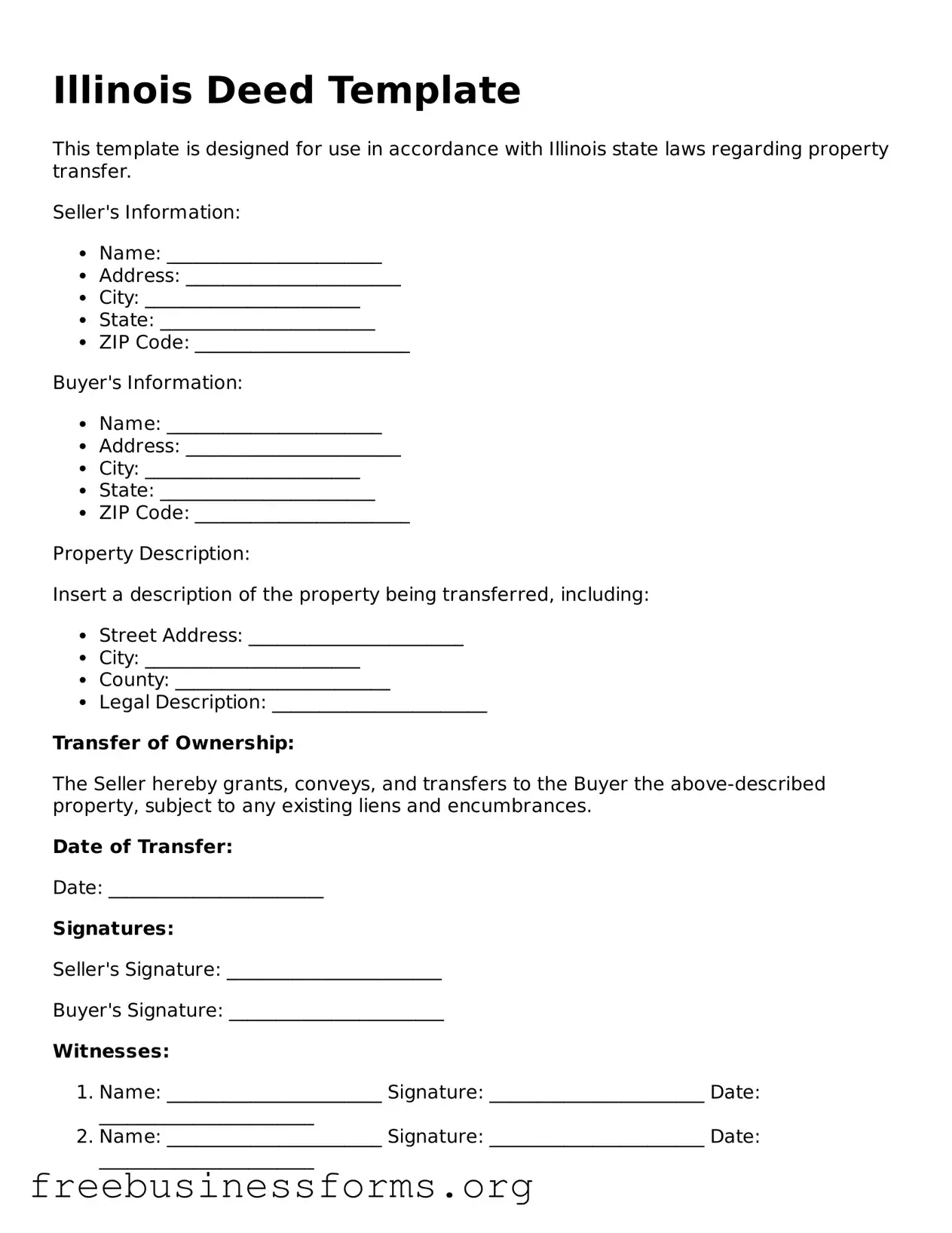Illinois Deed Template
This template is designed for use in accordance with Illinois state laws regarding property transfer.
Seller's Information:
- Name: _______________________
- Address: _______________________
- City: _______________________
- State: _______________________
- ZIP Code: _______________________
Buyer's Information:
- Name: _______________________
- Address: _______________________
- City: _______________________
- State: _______________________
- ZIP Code: _______________________
Property Description:
Insert a description of the property being transferred, including:
- Street Address: _______________________
- City: _______________________
- County: _______________________
- Legal Description: _______________________
Transfer of Ownership:
The Seller hereby grants, conveys, and transfers to the Buyer the above-described property, subject to any existing liens and encumbrances.
Date of Transfer:
Date: _______________________
Signatures:
Seller's Signature: _______________________
Buyer's Signature: _______________________
Witnesses:
- Name: _______________________ Signature: _______________________ Date: _______________________
- Name: _______________________ Signature: _______________________ Date: _______________________
Notary Public:
State of Illinois, County of _____________.
Subscribed and sworn before me this _____ day of __________, 20__.
Notary Public Signature: _______________________
My Commission Expires: _______________________
